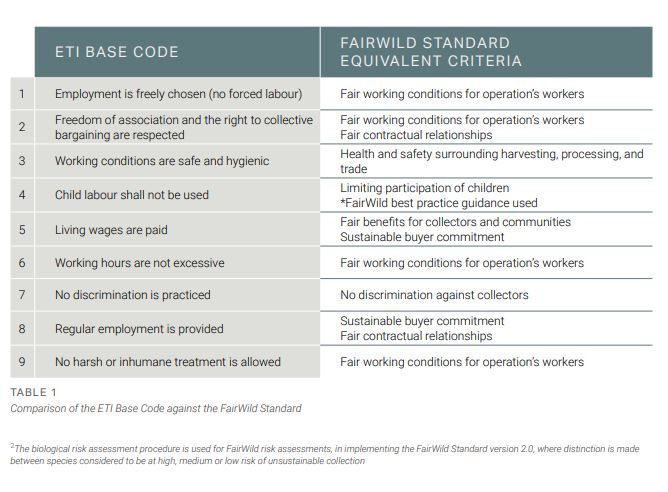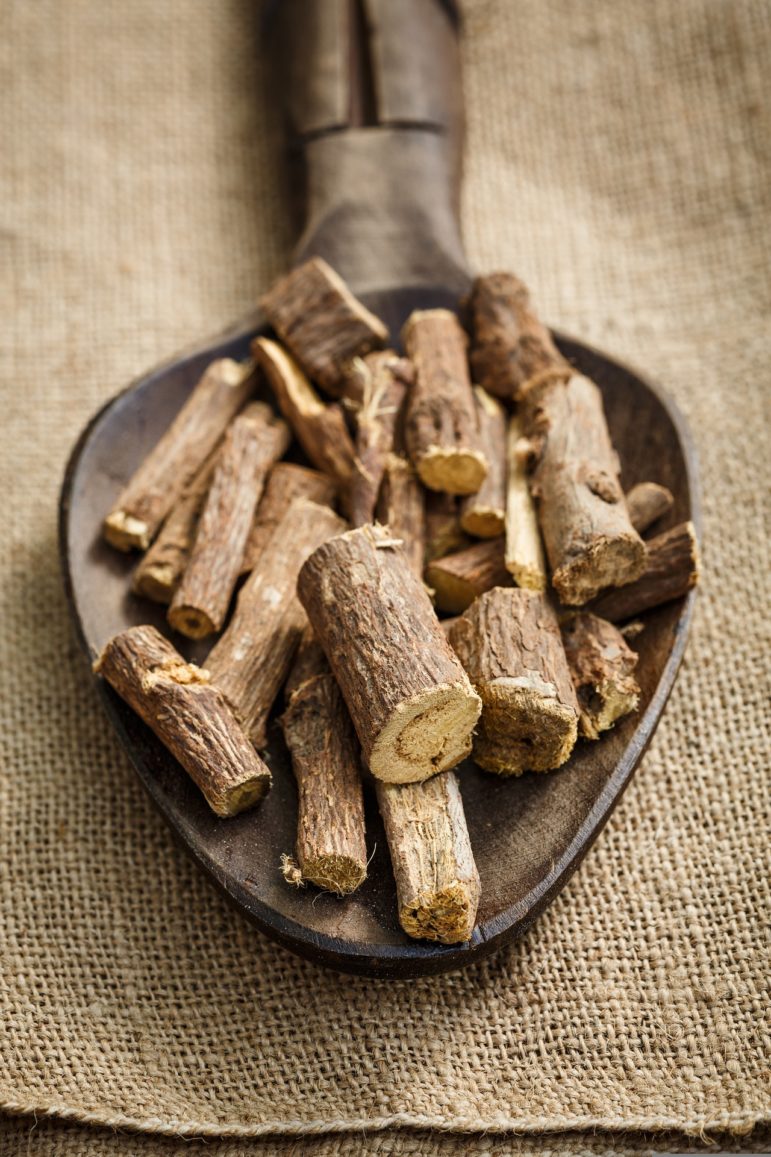ROME – Earlier this year a report that was compiled and released in a joint effort by the Food and Agriculture Organization of the United Nations (FAO), TRAFFIC, and the International Union for Conservation of Nature Species Survival Commission Medicinal Plant Specialist Group (IUCN SSC MPSG), highlighted 12 wild plants that are at the most at-risk of environmental impacts and the exploitation of the workers who harvest them.
FAO is an international organization that leads international efforts to defeat hunger and improve nutrition and food security. TRAFFIC is a non-governmental organization working globally on trade in wild animals and plants in the context of both biodiversity conservation and sustainable development, and IUCN SSC MPSG is a global network of specialists contributing within their institutions and in their regions, as well as worldwide, to the conservation and sustainable use of medicinal plants.
Together these three organizations examined the risks posed by the trade and harvesting of 12 wild plants that are commonly used in a variety of household products that range from cosmetics and aromatherapy to food and medicinal supplements. The risks outlined include overharvesting to the point of potential extinction of the species; exploitation of workers due to endangerment and the use of child labor; as well as the negative impacts on the environment.
Many of the wild plants the report found most at risk will be familiar to many magical practitioners. Trying to source products sustainably that incorporate the use of plants that are wild harvested can be challenging.
While few companies list how and where they source many of the ingredients they use in their products, there is both an increasing demand among environmentally conscious consumers to know and companies who are attempting to meet the demand by offering ethically and sustainably produced products.
The criteria used in the social risk assessment of the report were measured against the Ethical Trading Initiative (ETI) Base Code by comparing it against the FairWild Standard to ensure that the specific labor context of wild harvesting was adequately covered.

The twelve plants the report focused on were selected for importance in trading and their representation of both the challenges and opportunities to the wild-sourcing of plants.
The list was selected to include species across the spectrum, from those that are:
- Already subject to careful management to avoid over-harvesting and ensure equitable trade;
- In need of more attention now due to their susceptibility to harvesting pressure (for example over-collected, vulnerable to unsustainable trade), and/or being in supply chains problematic due to social inequality of trading practices;
- Likely to require more attention in future as markets for them grow.
For instance, frankincense is used by magical and spiritual practitioners for protection, purification, meditation, and in the creation of sacred space. It is used in the production of a variety of incense, distillation for aromatherapy products, perfumery, and cosmetics, and also has traditional medicinal uses.
While it is one of the oldest substances known to be used in all sorts of spiritual, religious, and magical practices, frankincense has seen a sharp rise in demand over the past two decades.
The majority of frankincense is sourced from the Boswellia sacra tree species as sap which then hardens into resin once it makes contact with the air. There are other species of trees in the Boswellia genus that are also sources for frankincense, but the primary data in the report’s profile focuses on B. sacra species.
While the biological risk assessment focuses on the B. sacra species and lists it as medium risk, other species may be at greater risk due to their lack of or slower regeneration ability, overharvesting, and ecosystem degradation. There is also “a significant lack of data” and the last scientific research done in the regions where Boswellia grows dates to the 1980s.

Frankincense trees in Wadi Dawkah, Dhofar region, Oman. (2013) – Image credit: Armatus1995 – CC BY-SA 4.0
The three countries that account for the largest amount of frankincense sourced are Oman, Somalia, and Yemen. The most recent data compiled in 2016 estimated that roughly 225,000 people depended on jobs of resin harvesting and the work represented anywhere from 57-72% of their annual income.
The social risk is listed as high in the report citing factors of internal conflicts in both Somalia and Yemen that contribute to violations of worker’s rights, a high vulnerability to modern slavery, and the potential for the exploitation of child labor. While Oman is more stable and the risks are somewhat lower, there still exists a not insignificant risk for the same issues as are found in the other two countries.
Another commonly used wild harvested plant for magical practice is licorice, Glycyrrhiza glabra. Licorice root is often a component in love spells, to attract to romance and passion, but also in spells to compel and control.
Licorice root is found growing wild in many countries around the globe, its native origin comprises a wide swath of Europe and the Middle East. It has a broad array of uses that range from food and medicinal to cosmetics and even as an additive for tobacco products.
While the biological risk to licorice is low due to the plant’s prevalence, it does take between three to five years for the roots to regenerate enough to be harvested again. Generally, only a one-meter section of the roots, which grow in lengths of two to three meters, are harvested. China saw a 60% decline in wild licorice stands between 1980 and 2009 largely due to land conversion. In Kazakhstan, improper root harvesting done with tractors or machinery has the potential to harm ecosystems by drastically reducing licorice stand populations which affects soil and results in erosion.
The countries that lead in the harvest and production of wild-collected licorice root include Afghanistan, Pakistan, Uzbekistan, Turkmenistan, Kazakhstan, Armenia, Azerbaijan, Georgia, and China.
The social risks range from medium in countries like Azerbaijan, Uzbekistan, and China, to high in Iran and Turkmenistan. Iran and Turkmenistan both have high rates of modern slavery. Turkmenistan also is assessed as having a high rate of corruption. Uzbekistan is also noted for a concerning level of modern slavery. While Azerbaijan is noted for child labor exploitation in other areas of farming, none are directly tied to the licorice harvest or processing.
The amount of data on harvesters is sparse at best and what is known is that the majority appear to come largely from rural and low-income communities that often depend on the harvest as their sole source of income. These factors make them more vulnerable to potential abuses.
Juniper berries are another wild harvest plant product that are often used in a variety of magical practices with their uses ranging from spells for love and friendship to protection and hex-breaking.

Dried juniper berries – Image credit: Pirkko Seitsenpiste from Pixabay
Juniperus communis berries have a number of applications in food and beverage production, aromatherapy and cosmetics, traditional medicine, and religious practices. While wild juniper grows across most of the northern hemisphere, the shrub still faces challenges when it comes to biological risks.
Juniper is listed as being of medium biological risk due to declining populations in some regions, and its slow regeneration and growth process with berries takes anywhere from 2-3 years from the time the fruit is produced to when it is fully ripened.
The social risk is also assessed as medium in eastern and central Europe. The report notes, “There is documented rural-urban migration and a decrease of interest in wild plant harvesting, resulting in the loss of traditional knowledge and harvesting techniques for wild plants in eastern Europe.”
The risk factor is a result of the vulnerable populations that often perform the harvest in those regions. Those populations identified as vulnerable are largely comprised of the Roma, the unemployed, the elderly, and women in rural and low-income communities. Also noted is the potential risk of child labor, though not as great as in other countries and regions.
The report also contains profiles in risk assessment of the nine other wild plants included in the Wild Dozen list.
They are:
- Brazil nut, Bertholletia excelsa Bonpl.
- Baobab, Adansonia digitata
- Argan oil, Sideroxylon spinosum
- Candelilla wax, Euphorbia antisyphilitica
- Goldenseal, Hydrastis canadensis
- Gum Arabic/Acacia gum – Senegalia senegal
- Jatamansi, Nardostachys jatamansi
- Shea butter, Vitellaria paradoxa
- Pygeum, (often listed as Prunus, African cherry, red stinkwood, and African almond), Prunus africana
The report also outlines a number of options for improving the status of each of the wild plants contained within the profiles. Those options range from better data collection and more research being done to conservation, restoration, and domestic cultivation as well as solutions such as certifications and standards. Local producers and harvesters can also partner with both governmental agencies and non-governmental organizations to help ensure safety for harvesters, products, and plants.
While some of these wild plants have magical uses, none are as prominently used or recognized as frankincense, licorice root, and juniper berries within the Witchcraft, Pagan, and Pagan-adjacent communities. Burning frankincense for purification or meditation that was harvested unethically and utilized elements of slavery, for example, may raise spiritual questions about their source energy for practitioners. Consumers and practitioners concerned about sustainability can now know the sources of products and risks associated with their harvest.
The Wild Hunt is not responsible for links to external content.
To join a conversation on this post:
Visit our The Wild Hunt subreddit! Point your favorite browser to https://www.reddit.com/r/The_Wild_Hunt_News/, then click “JOIN”. Make sure to click the bell, too, to be notified of new articles posted to our subreddit.
